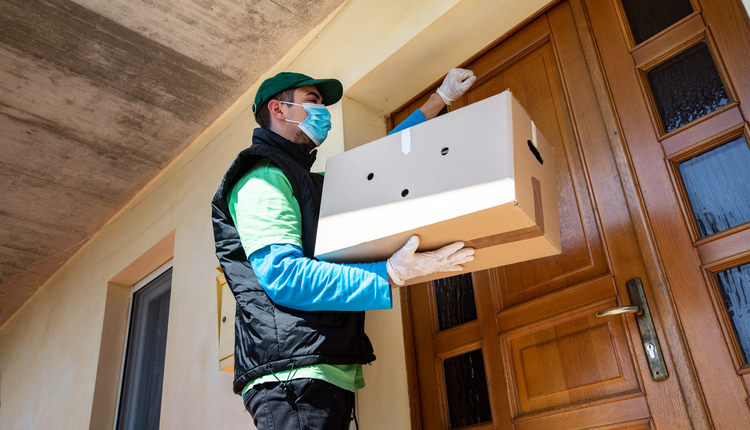E-commerce is projected to cross the $1 trillion mark in the United States this year – for the first time ever. While that powerful statistic breeds an endless array of opportunities for businesses, it’s also riddled with inherent challenges. Shipping ports continue to resemble overcrowded parking lots, and every point in the supply chain is plagued by critical bottlenecks. On top of that, labor shortages are further complicating operations. All that said, today’s consumers don’t care about any of the above. They expect faster shipping, a positive customer experience, and the highest level of sustainability. While that’s certainly a tall order for any company, taking a more strategic approach to fulfillment can help businesses better weather the storm at hand, and set themselves up for a successful future.
Now is the time to examine end-of-line packaging choices (both materials and equipment), fulfillment workflows, and overall supply chain strategy to meet the growing demands of customers.
Review/Analyze Current Packing Approach
Start with a thorough analysis of existing procedures and end-of-line packaging. What solutions are currently being utilized? How are they performing? This includes evaluating everything from packs per minute, material consumption, ergonomics, and overall workflow efficiency. Are these solutions ultimately allowing you to hit your key performance indicators (KPI)? Then from a macro perspective, do these solutions fit well, and function efficiently, in your overall operation?
Taking Speed and Efficiency to the Next Level
As mentioned earlier, labor shortages are at the top of nearly every company’s pain points. Solutions such as automated end-of-line packaging equipment and picking robotics can not only help to fill the labor gap but increase throughput. In turn, more products can get out the door and in the hands of consumers. Software is also becoming a vital complement to said equipment. Warehouse Management Systems (WMS) are becoming the key to generating strategic data and then leveraging it to maintain and grow operations. This means monitoring equipment and labor utilization, material forecasting, inventory management, and more.
Simplifying the Last Mile
Ninety six percent of surveyed consumers consider “fast delivery” to mean same-day delivery. Furthermore, 80% want same-day shipping, while 61% are looking to receive their packages even faster — within one to three hours of placing an order. Those expectations are putting undeniable stress on businesses, which means it’s time to consider growing their fulfillment network – either internally or via a third-party logistics company. Investing in decentralized micro-fulfillment centers in the geographic areas that are closest to customers, and adopting a ship-from-store model, if applicable, can help simplify “last mile”. As a result, a company can shorten its shipping times and lower costs. Within those smaller facilities, packaging equipment must then possess a smaller footprint, and be incredibly versatile in terms of the packaging produced. On-demand, end-of-line packaging systems that create void fill and cushioning materials can offer those very advantages, creating packaging only when you need it, and in a variety of sizes to fit product needs.
Going Green
Consumers want a company to source sustainable packaging and make recycling easy. According to Food Dive, 54% of consumers take sustainable packaging into consideration when selecting a product. Miller Recycling also noted that 80% of adults said they would recycle plastic more frequently if they had additional facilities and/or guidance, with 60% agreeing that they do not know how to recycle some types of plastic packaging.
In order to meet customer sustainability expectations, companies need to
- Develop a clear sustainability vision and measurable goals for public/internal use
- Utilize sustainable protective packaging solutions with recycled content and recyclability (both store-drop off and curbside recyclable)
- Strategically communicate product and packaging recycling best practices
- Partner with suppliers that offer How2Recycle certified materials, which clearly label recycling directives
Damages Significantly Impact Profits
Shipping-related damages can have a profound impact on profits. Companies oftentimes fail to consider the costs of returns, which include the unnecessary expense associated with product replacement, labor, packaging, and freight. Businesses should lean on packaging suppliers to evaluate current materials and suggest the right prescription of cushioning, void fill, and block/brace options to ensure products arrive undamaged. Making the right choices up front minimizes the costs associated with reverse logistics.
Premium Customer Experience Drives Repeat Business
Another important deliverable is to provide a customer experience that is premium and on-brand. Packaging components can play a critical role in helping make that happen. Research tells us that parcel packaging truly impacts consumer perception. According to a study administered by Pregis and the University of Wisconsin, a premium packaged product was perceived as being 32% more valuable than a product outfitted in economy packaging. On top of that, 52% of consumers are likely to make repeat purchases if they get premium packaging from an online retailer.
Providing a quality experience doesn’t have to be challenging. Here are some simple examples of how packaging components can be used to amplify product value:
- Printing to amplify company branding
- Tape design/internal printing on box
- Color variability to enhance unboxing experience
- Material choices that support sustainability
- Parcel packaging protects, primary packaging delights
Consider which works best for your business, and then use those factors to deliver a top-notch experience for your consumers.
Mike Purgatorio is Segment Marketing Manager, Pregis. Mike leverages vital industry data to develop and implement go-to-market strategies across Pregis’ key verticals. Through these efforts, Pregis is able to provide end-of-line packaging solutions and services that strategically support the ever-evolving needs of its diverse customer base.
This article originally appeared in the March/April, 2022 issue of PARCEL.









